Vol. 2, Issue 4, May 19, 2021

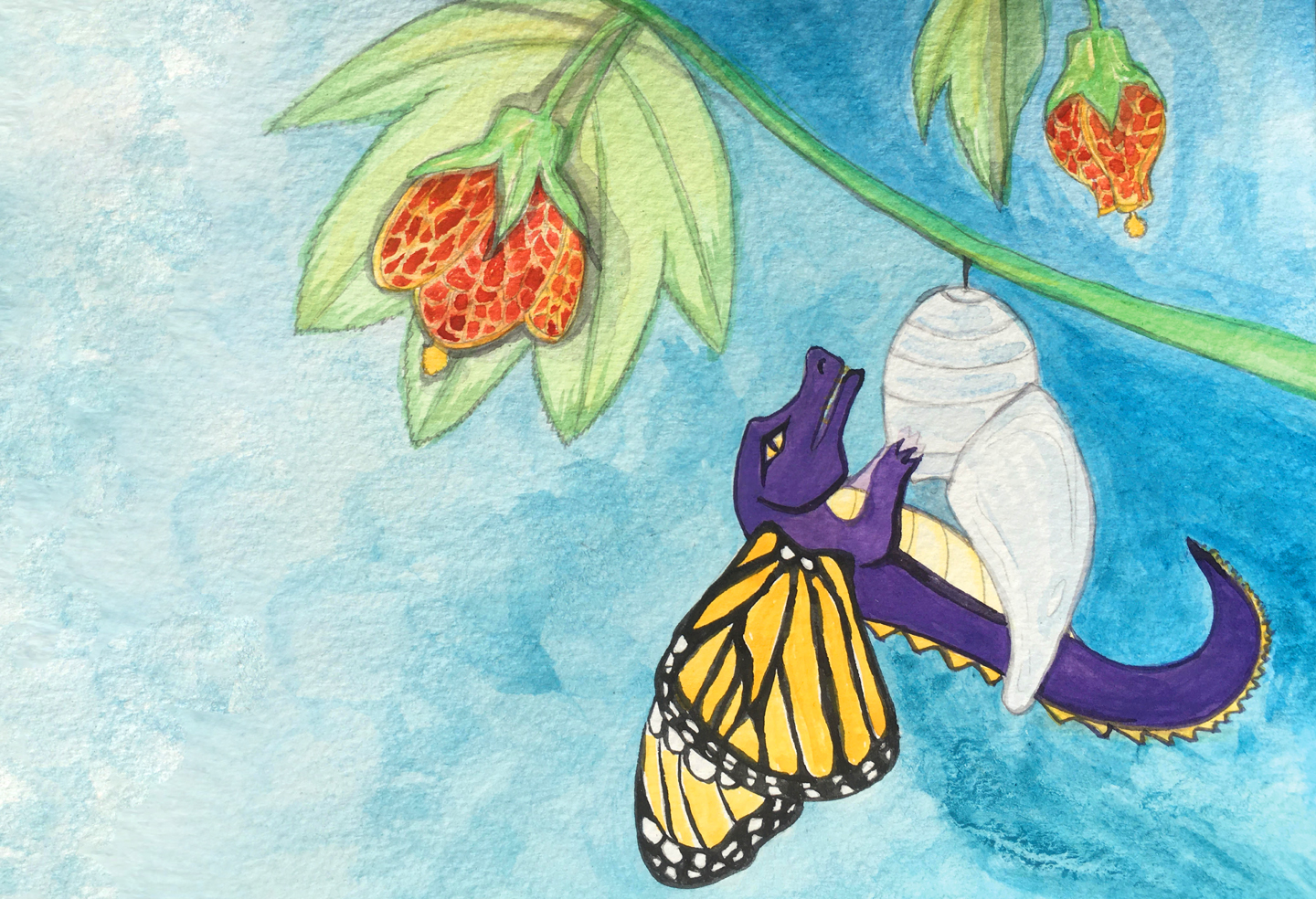
E-merging: Sustaining and being Sustained by Asian American Heritage
By Wei Ming Dariotis, Faculty Director, CEETL; Professor, Asian American Studies Department; Affiliate Faculty, Educational Leadership Doctoral Program
Sustaining Asian Americans
Here I am, a professional Asian American. As a mixed race person, I am rarely identified correctly for my ethnicities, even though my name explicitly locates me in two of them: Chinese and Greek. I spent one dinner telling the nice lady next to me that I was not any of the various Asian ethnicities she was guessing. She had started with, “Well, you’re not Chinese.” Armed with her certainty, she demonstrated an impressive knowledge of the variety of Asian ethnic identities, but she never got it right.
This experience of being told I was not Chinese is an inversion of the most common experience of Asians and Asian Americans: being presumed to be Chinese. This year, that presumption has been even more deadly than usual. Overt and covert expressions of Anti-Asian and Asian American violence continue to take a huge toll on the mental, spiritual, and physical health of our communities.
Sustaining Asian Americans means not presuming—and not guessing, but asking.
It means explicitly and overtly speaking out in solidarity; writing solidarity statements as a collective process of learning; seeing the pain—and recognizing that it has always been there; and taking action to end the pain. Remaining neutral is not an option.
Being Sustained by Asian American Heritage
In some sense, it does not matter that I am Chinese American. That my mother is Shanghainese, in fact, and my stepfather is a 4th generation Chinese American with deep roots in SF Chinatown. I could be any Asian, or none. The violence and hatred against Asians does not need to know what kind of Asian I am, nor has it ever. That violence just needs to see me as an easy victim onto whom fear can be externalized: 100 years ago or today.
But we as educators do need to know about Asian American diversity so we can teach our students to critically analyze the stereotypes that lead to anti-Asian violence. To do this, we need to be open to being sustained by our collective Asian American heritage—because it is a fundamental part of what it means to be American, and our Asian heritage, which is fundamental to what it means to be human. Being sustained by this means recognizing that the term “Asian American” is not merely a claim to an identity: it is a call to serve the people.
To quote the (unofficial) Asian American anthem, Grain of Sand’s “We Are the Children”:
We are the children of the migrant worker/ We are the offspring of the concentration camp/ Sons and daughters of the railroad builder/ Who leave their stamp on America, The chorus calls for us to “Sing a song for ourselves/ What have we got to lose?”
E-merging
Last May, I thought I would experience extreme isolation working from home, but what I found instead is a hunger for community that encourages us to be more intentional and thoughtful about how we connect with others including setting clear expectations and boundaries for the ways that we treat one another while working.
This summer, my husband and I will host the bi-annual GirlFly in the Gardens, a program of FlyAway Productions. Twenty teenage BIPOC girls from our neighborhood—the Bayview—will reflect on the themes of “Land, Belonging, and Racial Justice,” while learning a site-specific dance to help them take back the public spaces that are so often denied to them. We will feed them, teach them about the foods we grow in our community garden, and help them find their voices through writing.
As they emerge, I will emerge with them. We will take back the spaces we have been denied. I will speak, as an Asian woman, so that my sisters may share in our “song for ourselves,” so long denied, so long silenced.
As we begin to emerge from quarantine, what can we take with us from our time apart about how we learned to intentionally come together online? What is our context? What is our power? What is our positionality? We have had to think through these things more carefully than ever as we work from our bedrooms and kitchens; we have had to consciously integrate personal and professional while breathing through our vulnerabilities.
In unity,
Wei Ming Dariotis


ANNOUNCEMENTS CEETL: News & Latest Events
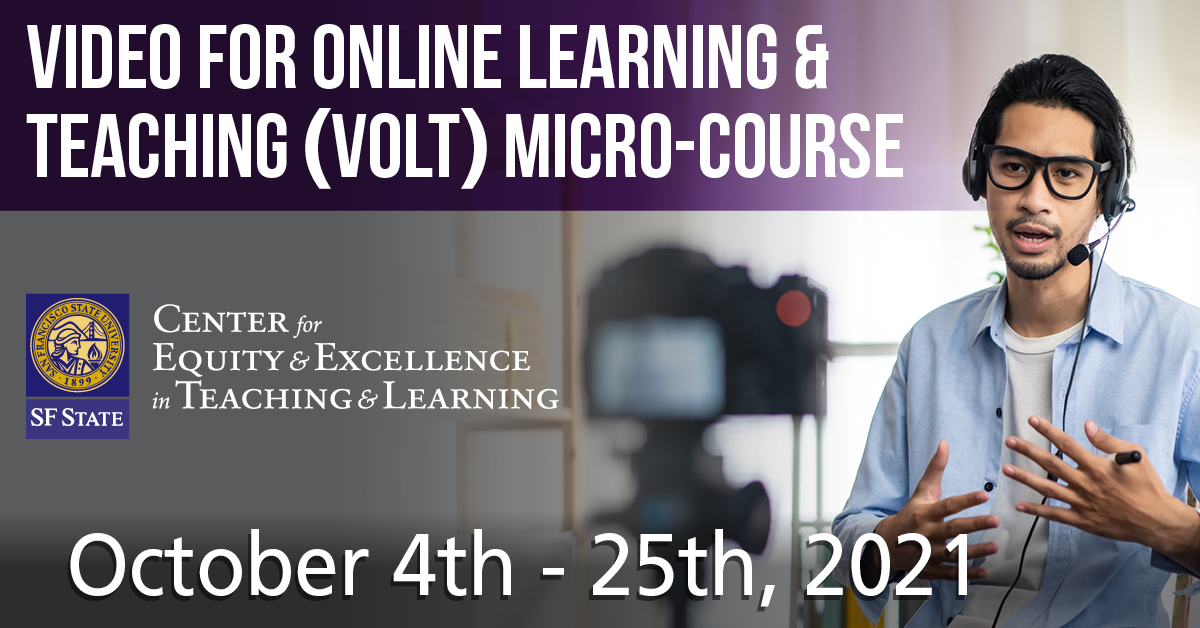
Video for Online Learning and Teaching (VOLT)
CEETL is offering a new online micro-course focusing on Video for Online Learning and Teaching (VOLT).

One-Question Survey: Meaningful Interactions
CEETL is developing a micro-course on meaningful interactions, and we want to hear from you!
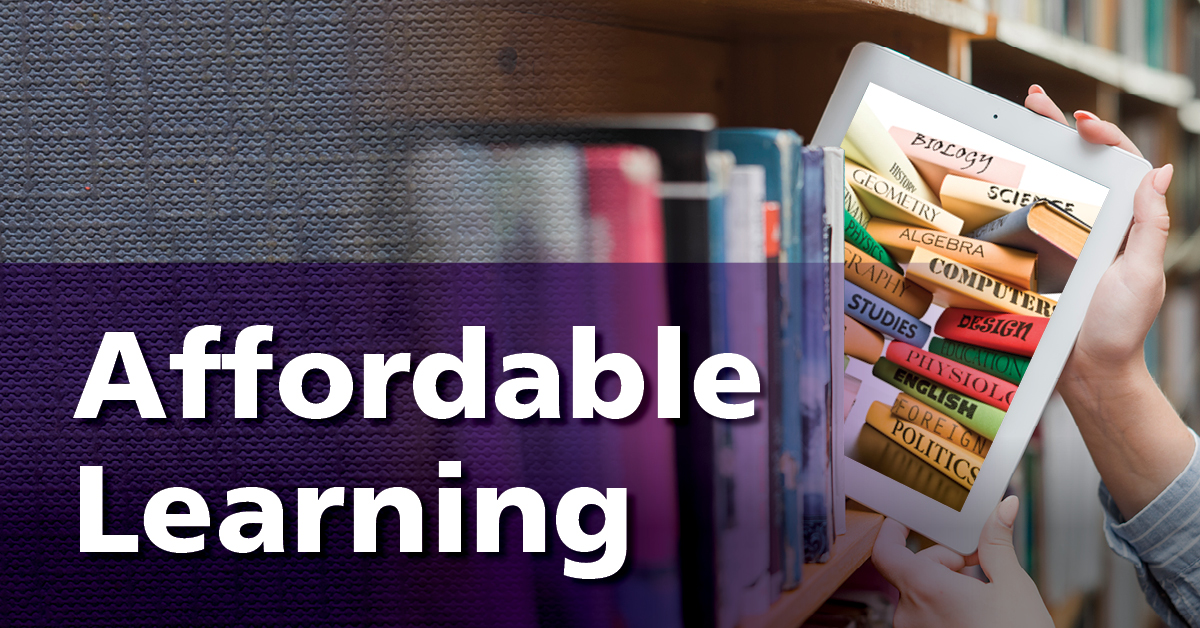
Affordable Learning's New Website
SF State’s Affordable Learning website has a new look with additional resources, videos and data on the program’s impact.
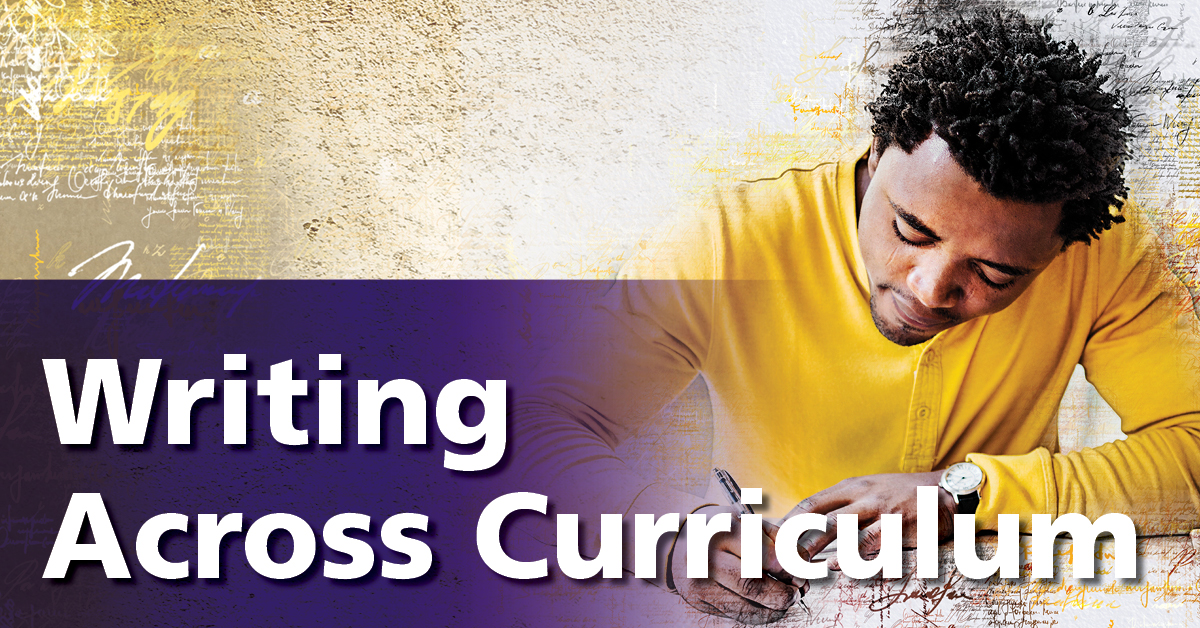
WAC's New Website
As part of CEETL now, Writing Across the Curriculum (WAC) has a new look and web address!

New! Staff: Partners in Inclusivity
Staff support student success in ways that faculty often do not have the opportunity to see. This feature focuses on staff as partners in creating an inclusive environment in which our students feel that they belong. Our inaugural focus is on an extraordinary member of the College of Science and Engineering Staff, Donna Walker-Blount, who has been working at SF State since 2000.
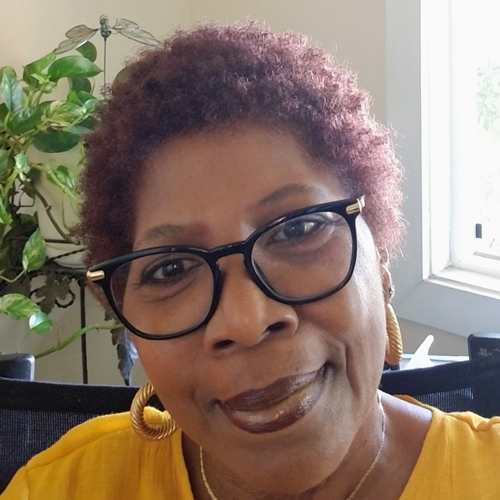
'Transition from Fear to Calmness'
by Donna Walker-Blount
Administrative Support Assistant
College of Science and Engineering
What do you provide students and faculty to support belonging and inclusiveness?
I serve as a model for engaging difference, respect, dignity, openness and acceptance, as multiculturalism is our greatest strength for inclusiveness and a sense of belonging. Although I encounter individuals who are resentful and disrespectful — perhaps because of their implicit racial bias — when they communicate with me, I respond to their needs with respect, integrity, professionalism and kindness.
What experiences have you had in your staff role that relate to belonging and inclusiveness?
Working in the College of Behavioral and Social Sciences and the College of Sciences and Engineering, Office of the Dean, students ask me a plethora of questions but the number one question: Is the Dean a good person and what type of person is the Dean? I offer assurance to students that they will be okay and there is no need to fear. I maintain eye contact with them to help them transition from fear to calmness. Remembering their names also is important, which transmits the message that we care about them. I realize the power of these interpersonal connections with students and faculty. Building relationships based upon respect, fairness, and equity, perpetuates a professional climate of inclusiveness and a sense of belonging. I am committed to building these relationships daily.
What roles do you see yourself and other staff members performing in relationship to supporting pedagogies of inclusive excellence?
I realize that I am respected and admired by others which motivates me to continue to treat everyone with care and respect. The greatest tools a member of the SF State community can possess are to be an effective communicator, authentic listener, reflective, and embrace others’ lived experiences. As a staff member of the SF State community, one of my roles is to communicate that everyone is important. I support both students and faculty in achieving academic and professional aspirations because they are important. At times, I may overextend myself to students, especially, but I persevere as I am confident that my support will contribute to them reaching their potential and goals.
While these characteristics of effective communication, genuine listening, caring for others, accepting and understanding others’ experiences, building a culture of trust, safety and calmness, and conveying the message that an individual is important, are pedagogies of inclusive excellence, I call them gifts. We must stay positive and work toward building a campus community of inclusiveness and equity.

Taste of the PIE: Faculty Highlights
Justice, Equity, Diversity and Inclusion (JEDI) Plans
- What is one JEDI change you have accomplished you will share with your colleagues?
- What is one change you still feel hesitant about making in your JEDI transformation? (maybe something you want to do but have questions or concerns about?)
- In the context of these, we invite you to write an outline of a plan for actualizing this statement to make your pedagogy more humanizing, empathetic, and responsive. This plan can focus on the steps you will take over the next semester or year; it should be achievable and specific.

JEDI Plan
by Salma Begum
Lecturer Faculty
Physics & Astronomy
What is one JEDI change you have accomplished you will share with your colleagues?
I do admit that I have learned whole new things that I didn't even know until the JEDI PIE. One of the topics that I would like to mention is the land acknowledgment. I know now what it is. And why we should acknowledge them.
What is one change you still feel hesitant about making in your JEDI transformation? (maybe something you want to do but have questions or concerns about?)
Upgrading, I am not sure how to make this change but I can't stop thinking about how I can motivate my students without grading.
What is your JEDI plan?
Plan: I would like to look back at my syllabus and make changes if needed. I would also like to include the land acknowledgment and my positionality to my iLearn welcome page as well as to my course syllabus.


Continue the Work
by Donald Ivy Frazier, Jr.
Lecturer Faculty and Student Advisor
Graduate College of Education
What is one JEDI change you have accomplished you will share with your colleagues?
One JEDI change that I have accomplished is the changes in my syllabus. Another change is utilizing the action step template. I found that to be really helpful with my framing and educational leadership philosophy.
What is one change you still feel hesitant about making in your JEDI transformation? I don’t feel hesitant about making any changes. I was in the process of transforming as I entered the JEDI program. I noticed that my posts and responses to posts were not what typical academia would expect. This stems from my opportunity to dive into some individual research that I have always been intrigued with.
In the context of these, we invite you to write an outline of a plan for actualizing this statement to make your pedagogy more humanizing, empathetic, and responsive. This plan can focus on the steps you will take over the next semester or year; it should be achievable and specific.
- Rework my syllabus so that the text is more humanizing, and add a land acknowledgment. Incorporate a way to capture the needs of the students, and to connect with the right people—within or outside the department to meet students’ needs.
- Design the workshops I provide for students so that the structures and protocols are responsive to the needs of students within the given context. These workshops will be designed so that students are able to broaden their perspectives on leadership and deepen their understandings of positionality, self-accountability, and agency toward liberation.
- Explore other ways to assess students’ growth and development.
- Create opportunities to have a dialogue with my peers about my own instructional approaches and my growth and development.


My Life Project as an Instructor at SF State
by Yoko Toriyabe
Lecturer Faculty
Chemistry and Biochemistry
What is one JEDI change you have accomplished you will share with your colleagues?
One thing that I want to share with my colleagues is educational debt. Each student has a different background and knowledge and some of them may not have college-level math and reading skills. I want to make allyship with my colleagues to help those students and payback educational debt.
What is one change you still feel hesitant about making in your JEDI transformation?
One change that I still feel hesitant to work on is ungrading. I need to research more cases and figure out if it fits my classes. But when I read about it for the first time, it made my eyes open and I felt some different possible directions for college education. As an instructor, I always plan the structure of the classes to enhance the student's outcome, but what I have been doing, like regular grading, sometimes it may become an obstacle for students to achieve a higher level of understanding. This will be my life project as an instructor at SFSU.
Outline of a plan
- I will keep working on fixing my syllabus based on the Social Justice Syllabus Design Tool and make my syllabus more humanizing and empathetic.
- I will talk about land acknowledgment in each class every semester.
- I will make allyship with my colleagues to help Black, Latinx, and students of color to pay back educational debt, but it won't be limited to only those students.
- I will serve all students at SF State equally and equitably.


Land Acknowledgements: Care and Attention
by Noelle Lopez
Lecturer Faculty
Child & Adolescent Development
One of the biggest takeaways from the JEDI PIE Institute was Land Acknowledgments and how best to implement them. Each of our students comes from different backgrounds and I want Land Acknowledgements to be an authentic experience for each student and given the time and care they deserve. My own background has ties to both the Ohlone Tribe and European Descendants. With Land Acknowledgments, it is important to address both. There are students who come from similar backgrounds as well.
Land Acknowledgements should have a multi-step approach. The first step would be to explain what a Land Acknowledgment is, why we do them, and my personal background including what they mean to me. After, students can answer guided questions and come up with their own Land Acknowledgements. A large class discussion would follow where students can share their Land Acknowledgements if they feel comfortable. Finally, I would put all of our Land Acknowledgments together in a document to share.
I believe it is important to write Land Acknowledgments with care and address that students come from a variety of backgrounds and that Land Acknowledgments might look different between students. My hope that approaching Land Acknowledgments this way would give them the care and attention they deserve.

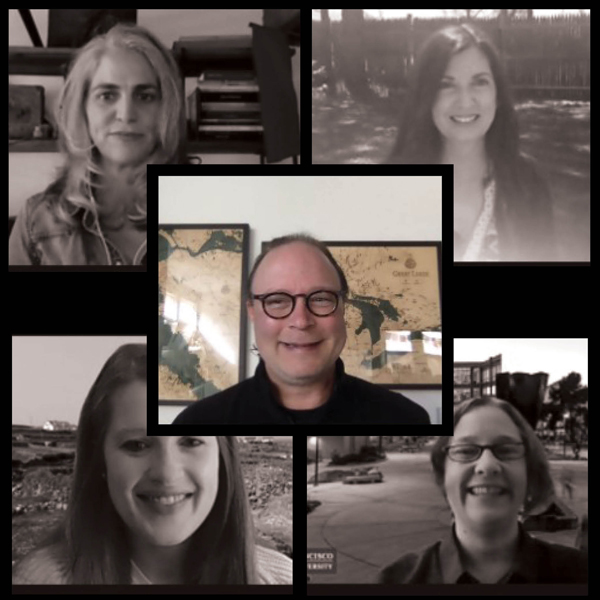
Implement, We Will
by Shawn Heiser
Librarian Faculty
J. Paul Leonard Library
Something I can share with colleagues who did not also participate in JEDI PIE is the wealth of ideas produced from it that can radically alter our pedagogy to become more humanizing, inclusive, empathetic and responsive. We can improve our allyship and become more effective librarians and educators by using the principles discussed in this course.
One area where I still have reticence is adding a positionality statement to a research guide. “Best practices,” tell us that less is more, keystrokes are a premium, and keep your pages pithy so as not to overwhelm the user. Perhaps I just need to figure out how to streamline my positionality statement and communicate it in a more efficient way.
Here are some ways I can make my pedagogy more inclusive, empathetic, and responsive:
- Add a land acknowledgment to all of my Research Guides, and begin my instructions sessions with one as well.
- Seek out more BIPOC voices in the materials I recommend on research guides and in classes across disciplines. Create activities which call for digging deeper into identities of authors/creators, use these opportunities to discuss privilege and hegemonic structures of white supremacy in education.
- Continue to try to make my instruction sessions and research guides more welcoming and inclusive for students.
- Incorporate the 1968 SF State Strike part of class discussions where appropriate. The significance and legacy of the strike and its outcomes could not be more important to our institution and culture. Explicitly position the event as a point of pride in the fight for social justice.
- Add more reflection writing assignments, however brief, to the end of class
- Create more opportunities for personal class interactions, such as icebreakers and other creative activities which humanize us to one another.
- Put the work in to become a true ALLY.
- Humanizing the context of the here and now, and its implications. Be real.

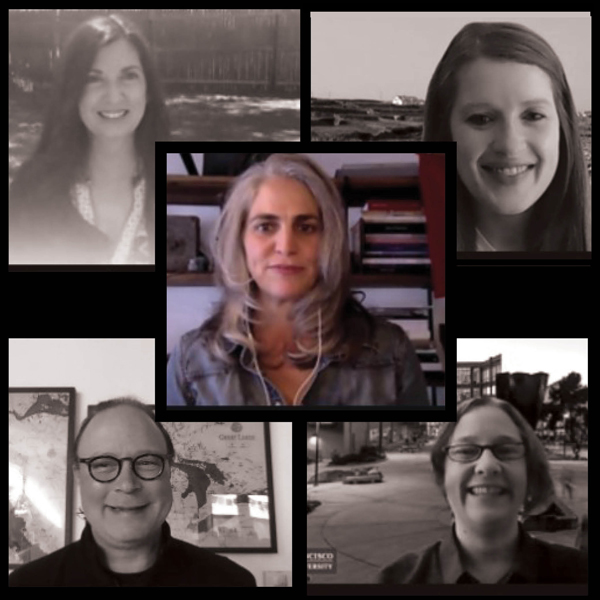
Continue and Share My JEDI Training
By Tanya Hollis
Special Collections & Archives Coordinator
J. Paul Leonard Library
What is one JEDI change you have accomplished you will share with your colleagues?
I was so fortunate to go through this training with a whole cohort of librarians; we had weekly meetings, and in those meetings, started to discuss a number of ways to implement anti-racist practices throughout our Library. In just the past week, we successfully made this a Library-wide priority and will be working over the course of the next year to develop more plans.
What is one change you still feel hesitant about making in your JEDI transformation?
I'm concerned that there's been little leadership until very recently in the Library to implement broad changes, but feel excited that so many of my colleagues now have a shared purpose and that we may be able to advocate more loudly to create real lasting change. We now have a broad consensus among Library faculty and staff that we need to act and have started to look at what actions we can take with our limited amount of power.
What is your JEDI plan?
Working with colleagues in Special Collections, we are planning a year-long project to reexamine all of our finding aids (the guides to our archival collections) and metadata (the language we use to describe our archival materials) to address problematic, or even racist, language and terms.
Specific goals:
- Research of similar programs in other institutions, to look for best practices;
- Create a list of resources, develop monthly reading lists, and facilitate monthly conversations to discuss and implement what we learn;
- Begin a review of all of our current finding aids, document which finding aids need revision, and develop a rubric for evaluation of finding aids;
- Develop policies to ensure that anti-racist descriptive practices are part of all workflows and editorial processes, including iterative editing to ensure ongoing revision happens at regular intervals.

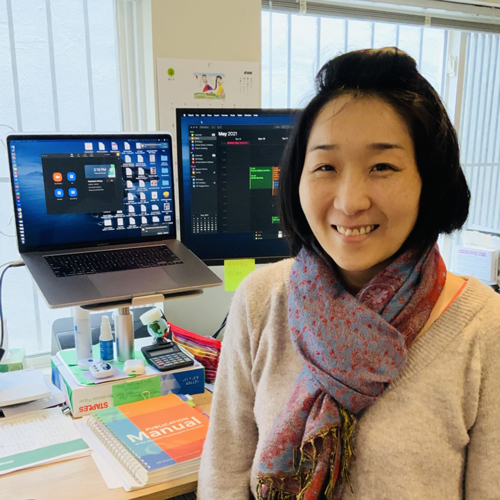
From the First Day On
by Mayumi Hagiwara
Assistant Professor
Special Ed. - Graduate College of Education
The JEDI PIE changed how I purposely situate my mindset and present core values, knowledge, and skills to students in each course. Since the program that I belong to collaboratively plans, designs, and reflects on course content, including syllabi and instructional approaches, I have shared the information and resources, especially about cultural responsiveness and mindfulness, over the course of the JEDI PIE! They were excited to learn about the pictures drawn by Native American artists in "Honor Native Land: A Guide and Call to Acknowledgement." We already implemented sessions focusing on the intersectionality of disability, race, and other cultural identities that are key characteristics in the education field. We are also talking about diversifying the list of guest speakers representing different lived experiences.
From next semester, I plan to start the first day of instruction by acknowledging and welcoming diversity within a class, including land acknowledgment. Also, to rethink course workload and make my instruction more humanizing, empathetic, and responsive, I will re-evaluate syllabi, course materials (e.g., readings, videos, podcasts), assignments, and rubrics to promote student understanding and engagement. As the JEDI PIE introduced a visual representation in course syllabi, I am planning to create a visual of how course contents are purposefully linked to important learning outcomes for students even after leaving SFSU. Thank you, JEDI PIE!
What is one JEDI change you have accomplished you will share with your colleagues?
Being mindful and being reflective of how I teach, how I get student feedback, and how I incorporate student feedback into ongoing instruction. I have been already talking about this with my colleagues because we often co-plan course materials. But I think my understanding and awareness have been deepened. I also want to talk about using the land acknowledgment statements across courses.
What is one change you still feel hesitant about making in your JEDI transformation?
Rethinking course workload and making assignments "lighter". We already struggle with this and try to be streamlined, but I think this is a worthwhile conversation to continue to have.
What is your JEDI plan?
I will re-evaluate syllabi, course contents, course materials (e.g., readings, videos, podcasts), guest speakers, assignments + rubrics strategies to engage with and amongst students if they are accessible and represent diverse cultural experiences. Then, I want to redesign these components to be purposeful to focus on what are important learning outcomes for students even after they leave SF State.

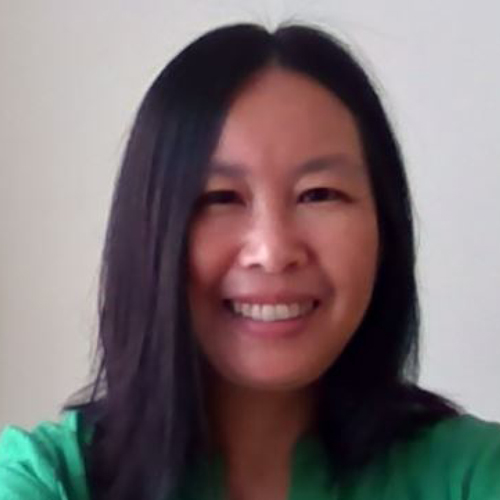
Model It
by Crystal Wong
Lecturer Faculty
English Language and Literature
The JEDI course, and the events that unfolded during the pandemic year, brought in a new wave of questions: how our discipline has been exclusive, who gets what opportunities, and how racial domination continues to pervade. JEDI brought a strong feeling of emotion and comfort.
As a teacher, I have the power to bring voices that have not been heard, but it’s not enough to just read books by authors of color. While that may be useful to give immediate voice and representation, is it the way forward to do that this year, and then immediately go back to whatever normal was? What I will do is not tokenize those voices but to add them into our collective canon and give them the same place as their white counterparts. This is one way in which I will continue a humanizing, empathetic, and responsive pedagogy.

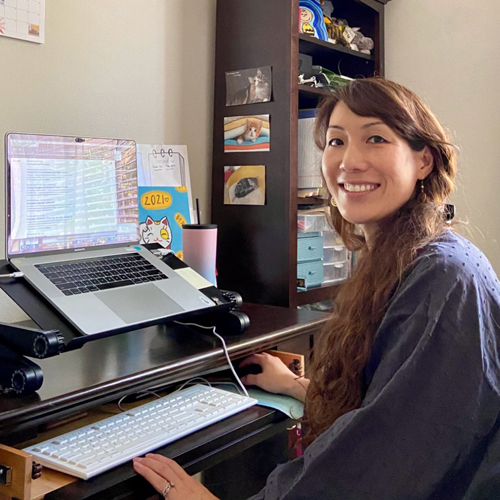
Action Plan for Next Time I Teach Science
By Kaho Tisthammer
Postdoctoral Researcher and Lecturer Faculty
Biology
I thought there was not much room to incorporate JEDI into science teaching, but I was wrong. I want to remove racism and white-centeredness from my course, but my concern is that I am not even aware of some of the issues. But I know the resources are out there, so my plan is to keep learning and researching.
I appreciated the activities from the 1st week [of the JEDI PIE Institute], which gave me the opportunity to create a page on iLearn to introduce myself and post a welcome message to my students. I am working on making changes to other aspects of JEDI that I learned from this class. I am more aware of student workload and consciously making an adjustment. I made myself and my course definitely more accommodating as well.
Here is my plan for making my pedagogy more humanizing, empathetic, and responsive:
- Research at least one JEDI issue in my field that I am not aware of and address it when I teach next time.
- Change grading policy to focus more on the learning processes.
- I learned the power and benefit of the Forum tool of iLearn, especially when we cannot interact in-person. I will use Forum more actively and effectively in my teaching.
- Create a student-centered course by soliciting feedback and getting input for the coursework, assignments, and topics.


Accomplishment and Reflection
By Bradley Bowser
Lecturer Faculty
Biology
I really enjoyed this course and I am very gracious to have had the opportunity and environment to scrutinize the many aspects of my teaching. I actually enjoyed breaking down the syllabi (and iLearn pages) of my courses and working to make every aspect of the class as accessible as possible.
I am still striving to find ways to dismantle my whiteness and work to reduce my position of power in the classroom. My current approach is to begin everything with listening and I try to encourage students to find their own paths to answers that satisfy them as opposed to always lecturing down from a position of power. This removal of power is something that I will be working on for quite some time, and I am very grateful to be aware of this important need.
To address this, I intend on evaluating and reworking every aspect of my classes for next semester. I will start by looking at the learning objectives: making them relatable, transparent, and relevant to the diverse students. I will then construct a welcoming syllabus and a reasonable and flexible schedule for the semester (after choosing a diverse set of texts, though I do prefer the free text I use now for financial equity). From there, it's an evaluation of the assignments and assessments, and then a redesign of slides and lecture materials (I am already working on slides for students who have visual impairments such as color blindness).

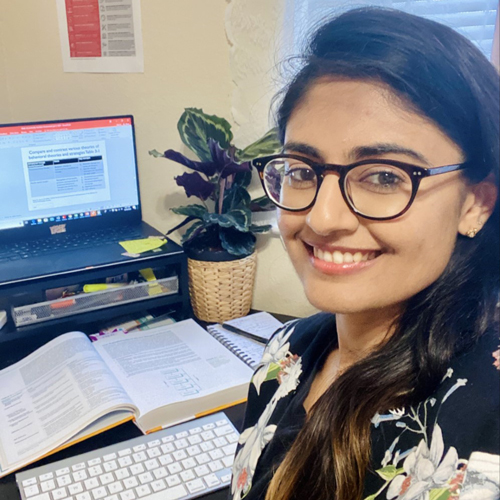
My Own Identity
By Zubaida Qamar
Assistant Professor
Family, Interiors, Nutrition & Apparel (FINA)
What is one JEDI change you have accomplished you will share with your colleagues?
I have been incorporating anonymous student feedback in all my courses, and I am very appreciative of the immediate feedback. That allows me to modify content instantly, responding to urgent student needs, before it is too late toward the end of the semester.
I have also become more comfortable talking about my own identity, thanks to this training!
What is one change you still feel hesitant about making in your JEDI transformation? (maybe something you want to do but have questions or concerns about?)
I feel hesitant about "Ungrading." I do use forums as completion activities (vs. correctness) but I am not sure if our accredited Dietetics major that requires a grade for every course can completely move in that direction. I can try to incorporate a grading contract that can be created with student feedback.
What is your JEDI plan?
My Plan to incorporate these changes for next semester:
- Use land acknowledgment in my welcome message for all my courses.
- Incorporate more work from BIPOC authors and different identities
- Making myself more aware, knowledgeable and comfortable to talk about sensitive issues (like systemic discrimination) and how we all can be better allies with our respective selves
- Understanding eurocentrism in commonly used concepts/documents in Nutrition and Dietetics like the Dietary Guidelines for Americans.


Collaborative Rubrics and More
By Carrie Hechtman
Lecturer Faculty
English Language and Literature
What is one JEDI change you have accomplished that you will share with your colleagues?
I have really enjoyed the experience of doing collaborative rubrics for essays. When I asked students what they thought the requirements should be for a recent essay, it was clear that they were engaged in the process, and they had a better understanding of the assignment after contributing their own language to the rubric. As I consider which assignments will benefit from this process, I realize I should also incorporate a collaborative rubric for the final portfolio. In general, I want to continue to move my classes toward further collaboration and democratization.
What is one change you still feel hesitant about making in your JEDI transformation? (maybe something you want to do but have questions or concerns about?)
Even though I’m already using a grading contract, there are still questions I have and adaptations I plan to make to try to get ever closer to the goal of antiracist assessment in my composition courses. I want to do more reading about this and continue to check in with other colleagues who are using it.
What is your JEDI plan?
- Further revise the language in my syllabus to reflect inclusiveness and high standards, and to include a land acknowledgment.
- Continue to define my own positionality and consider the effects on classroom power dynamics. Work toward becoming more comfortable with discussing this in the classroom.
- Work on my grading contract to make it clearer.
- Look for more opportunities to include collaborative rubrics for key assignments.
- Revisit the workload in my courses to see what I may need to adjust.
- Refer to the SFSU Course Accessibility List when planning courses.
- Continue to educate myself and my students about various economic and equity issues facing marginalized groups.

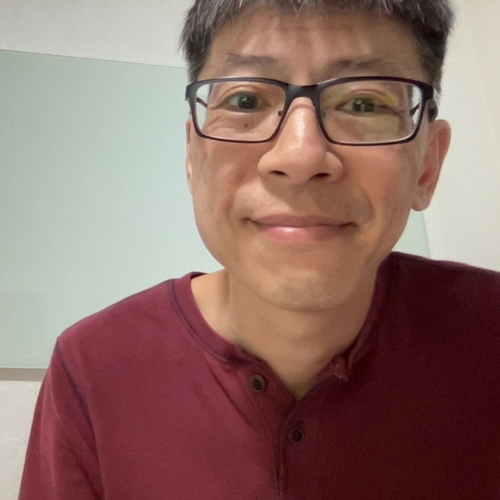
The HR JEDI Plan
By William Chin
Lecturer Faculty
Lam Family College of Business
I realized I was completely ignorant when it came to choosing my textbook. European American men wrote the text. Moreover, I did not incorporate supplemental reading with voices that represent the world of work. I need to make changes immediately to include the issues faced by those often not heard in the workforce.
What I have done: I have made statements about the representation of voices to my students. I shared with them my realization of the gap in the textbook I selected. I acknowledged this in my last session. In the upcoming weeks, I will be researching topics and articles to incorporate into the course. I will also invite students to do bibliography research to add to the case.
Hesitations: I think ungrading will be a challenge. The school administrator requires a grade at the end of the semester. If I was given a choice, I would like to see students show an upward trend in their progress.
What is your JEDI plan?
- Update my syllabus to include topics that affect people of color and those often marginalized in the workplace (new text, videos, articles, case studies, etc.).
- Have a section for students to research on topics affecting Human Resources - the students define their research topic.
- Creating opportunities for project work is challenging during these times when we are all on Zoom. However, I can employ a “speed session” to brainstorm and document their ideas and share them in class. This will allow time for students to collaborate to share ideas.
- Humanizing: I specifically choose synchronous classes. I hope that students who decide to take my session see the value of a live course engagement. I also bring in examples of student homework to discuss and share with others during class time. I treat each student as an individual.
- Empathy: I acknowledge students who work full time and the challenges that presents. I know; I work during the day and teach just one course! I want students to do their best and will push so that they can see themselves as successful.
- Responsivity: I work hard to provide feedback on homework assignments within the week. I want students to review feedback right away so they can make adjustments to the next assignment. I am committed to making myself available to students during office hours (or appointments).

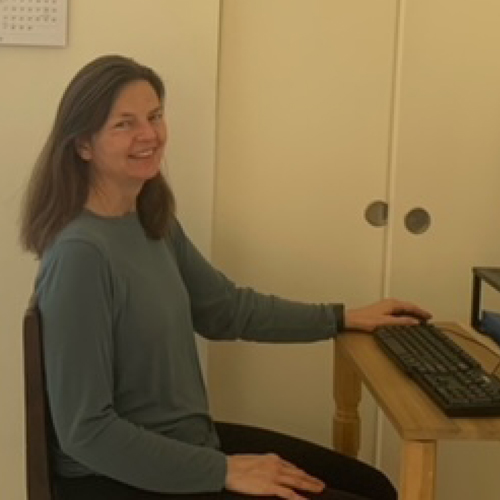
Universal Design Principles
By Pam Rittelmeyer
Lecturer Faculty
Geography & Environment
What is one JEDI change you have accomplished you will share with your colleagues?
I have become more sensitive to the low bandwidth that many students are experiencing during this global pandemic through the JEDI course. The module on Student Workload is one that I was able to immediately put into practice. The workload calculator is a cool idea, but I really got the most out of “The Seven Principles of Universal Design” reading. For the past couple of weeks, since working through this module, I have been applying these seven principles to the assignments in my classes. I ask myself the following questions about my assignments: Is it equitable? Is it flexible? Is it simple and intuitive? Is the information perceptible? Is there tolerance for error? Does it require low physical effort? Do students have knowledge of and access to the materials that they need to complete the assignment?
What is one change you still feel hesitant about making in your JEDI transformation?
The one change that I am most unsure of is how to grapple with my positionality in my classes. I am hesitant to bring up the subject in my classes unless it directly relates to the course material.
What is your JEDI plan?
My goal for the coming year is to make my teaching more humanizing, empathetic, and responsive. I plan to do this by:
- Creating a positionality statement
- Getting to know my students, their goals and intentions for learning in the course, and possibly implementing contract grading
- Designing assignments and assessments through a critical race perspective
- Integrating a land acknowledgment and Indigenous knowledge and practices into my course materials
- Designing strategies for inclusive and equitable engagement of Indigenous students.

Thank You Message
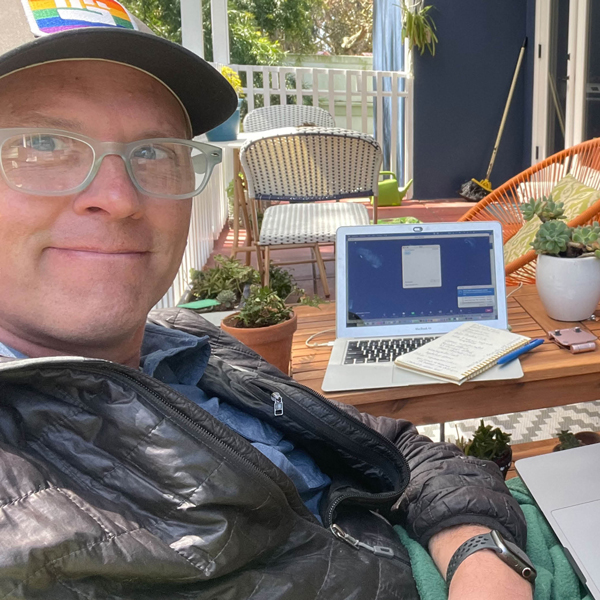
Thank You to Our JEDI Leaders Who Hosted Office Hours
by Jeff Cookston
Professor
Psychology
I want to say a heartfelt thanks to the people who hosted the office hour events. I attended more than the required two office hours because I appreciated seeing people and being in the community. The questions that were asked and the experiences that were shared really built my empathy for my colleagues around campus.
Hosting those office hours must have been taxing because anything could happen. I'm grateful to our colleagues who showed up for that work and for the wisdom that was shared.
I'll miss the emails about future office hours, but I appreciate that our training has concluded.
May equity be with you!

Academic Study Highlight: 'Why Ethnic Studies'
Make it Less of a Hard Place: Take an Ethnic Studies Course!
Amy Sueyoshi, Dean of the College of Ethnic Studies, and Sutee Sujitparapitaya, Associate Provost of Institutional Analytics, collaborated on a study on the effect of Ethnic Studies courses on student retention, GPA and graduation rates.
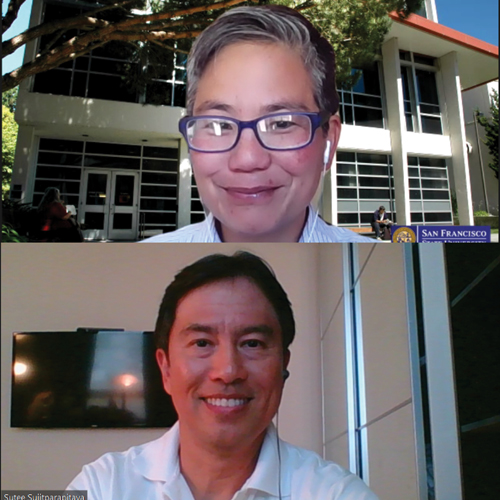
Questions and Answers
by Amy Sueyoshi, Dean of the College of Ethnic Studies and Sutee Sujitparapitaya, Associate Provost of Institutional Analytics
What questions inspired this research project?
Associate Provost Sutee Sujitparapitaya: In 2017, the Student Academic Pathway Project (SAPP) involved nine faculty members from different colleges to analyze student transcripts as a means of exploring the ways SF State students progress (or don't) through their degrees. From the transcript review, they noticed the positive effect of taking Ethnic Studies courses on graduation rates. I was asked to conduct a preliminary study and discovered that successfully passing Ethnic Studies courses is strongly associated with improved performance of SF State students across the campus (both Ethnic Studies majors and others). Therefore, I approached Amy to further examine academic benefits to SF State Ethnic Studies courses.
Dean Amy Sueyoshi: Faculty in the College of Ethnic Studies have always felt that their courses made a unique impact on empowering students, however, there had never been quantitative evidence verifying this. Thus, when Sutee approached me about the correlation that his office found between Ethnic Studies courses and graduation rates, it was an incredible opportunity to more formally amplify the efficacy of Ethnic Studies curriculum.
Why were you (each) personally invested in this research?
Dean Sueyoshi: As the dean of College of Ethnic Studies, I am professionally committed to advancing the field. Yet, for any person working in Ethnic Studies, staff or faculty, the professional work is also deeply personal. I went to undergrad on the East Coast in the 1980s where Ethnic Studies could not yet be found. I felt terribly dumb and alienated at school until I started working on an undergraduate research paper on Angel Island. A whole new world opened up for me, and I ended up graduating on Dean’s List after four semesters on academic probation. Hence, learning about Asian American history, though I had no formal training in Ethnic Studies, actually got me to succeed in college.
AP Sujitparapitaya: I found a study conducted by Stanford suggesting that Ethnic Studies courses helped address academic disparities by aligning individual student experience with curriculum. The researchers discovered that “San Francisco high schools students enrolled in Ethnic Studies classes not only made gains in attendance and grades, they also increased the number of course credits they earned to graduate.” While there had been similar studies with high school students, the study of college students is limited.
What surprised you the most?
Dean Sueyoshi: I was surprised to see how low the graduation rate was for students who did not take any Ethnic Studies course. Being an introvert and Buddhist, I’m not really into proselytizing, but after seeing the correlation between the graduate rates of students who don’t take an Ethnic Studies course, I would consider it a travesty to not encourage students to take Ethnic Studies as a higher education professional.
AP Sujitparapitaya: It is a surprise that even students with Ethnic Studies minors showed a very high graduation rate. For the Fall 2013 cohort, students with Ethnic Studies minors had a six-year graduation rate of 85 percent (or 31 percent higher than the overall Fall 2013 cohort).
What surprised you the least?
Dean Sueyoshi: The correlation of high graduation rates with Ethnic Studies majors did not surprise me as much since many of the faculty already know how meaningful Ethnic Studies courses can be.
What conclusions do you draw from your findings?
Dean Sueyoshi: College can be such a hard place, and students should do anything they can to make it less of a hard place. Take an Ethnic Studies course!
What actions should be taken by the university as a result of this study?
Dean Sueyoshi: The university already values the incredible curricular contribution Ethnic Studies makes to the campus. And like anything, we must take good care of the things we value in life. Thus, I would say that it’s important for the university as an entire body to continue to nurture and support ethnic studies so that we can together make this campus a place for success and empowerment for the students we serve.
AP Sujitparapitaya: Both CSU and SF State recognize the benefits of Ethnic Studies by incorporating it in the curriculum.

Partners in Teaching
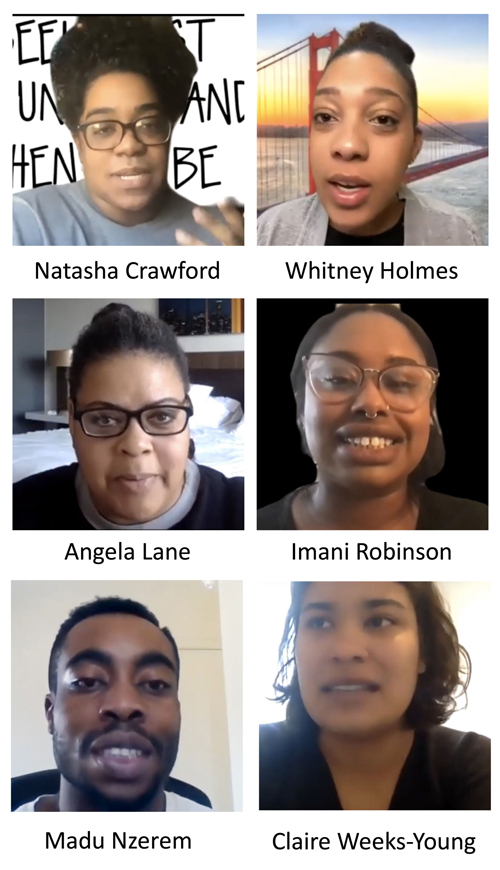
Chair's Council Workshop
by Laura Burrus, Chair of Biology; Petra Dekens, Chair of Earth and Climate Science
Lifting Black Voices in STEM
Last summer, after the murders of Breonna Taylor and George Floyd, I received emails from Biology graduate students asking me to engage the Department in becoming actively anti-racist. Over virtual coffee, I listened to their stories about the experiences of Black students in STEM. As a Chair, I was all too familiar with the numbers and I understood that we were failing our Black students. However, hearing the students’ stories reminded me that data never tells the whole story, and we need to center students’ stories in our JEDI work. This conversation led to a new BE-STEM (Black Excellence in STEM) initiative called Lifting Black Voices in STEM.
To amplify their voices, Lifting Black Voices in STEM organized a webinar panel for Chairs and Directors of the College of Science & Engineering. During this webinar, Black students and alumni including Natasha Crawford, Whitney Holmes, Angela Lane, Madu Nzerem, Imani Robinson, and Claire Weeks-Young, shared their experiences as Black people in the community and at SF State. The panel was raw and powerful. Embedded within their stories, Chairs and Directors heard a call for us to:
- Create safe learning environments in which Black students are seen and fully included. Instructors can set the tone in their classroom by reminding students of the value of diverse opinions and making space for all students to articulate their ideas (see safe learning environments recording).
- Increase the number of Black students, staff, and faculty and include positive representations of Black people in the curriculum (see positive representations recording).
- Engage faculty and staff in doing their own work around anti-racism (see do own work recording).
To elevate the Student voices even further, clips of the student voices from the webinar were used as the basis for workshops both in Biology and in the University-wide Chairs council (organized by 2 CoSE Chairs, Laura Burrus and Petra Dekens, in collaboration with CEETL leaders, Maggie Beers and Wei Ming Dariotis). With the students’ permission, the recording of the panel is now being disseminated across campus so that their voices can be heard by faculty in all Departments.
By the end of the University-wide Chairs Council, 33 Chairs and Directors had each committed to implementing 3 action items in their Departments and Schools in the next two months. In addition to sharing the recording of the LBVS webinar, Chairs and Directors pledged to a variety of actions, including organizing listening sessions in their own departments, working to increase the positive representation of BIPOC in student assistants, staff, and faculty, as well as in the curriculum, creating safe spaces for BIPOC students, providing resources for all campus community members to do their own workaround racism, and holding workshops to help their departments become actively anti-racist.
Workshops such as these are critically important as faculty, Chairs, and Directors need to hear the voices of our Black students, who are very real people with real experiences that cannot be reduced to data points on a graph. In addition, it was gratifying for participants to see that they could collectively come up with ideas that could be implemented in a short period of time. It is our hope that these workshops will serve as a catalyst for ongoing conversations and actions across campus.
Laura Burrus, Chair of Biology in partnership with:
- Maggie Beers, Assistant VP for Teaching and Learning
- Wei Ming Dariotis, Professor of Asian American Studies and CEETL Faculty Director
- Petra Dekens, Chair of Earth and Climate Science
- Brian Neumann, CEETL Communications and Outreach Specialist

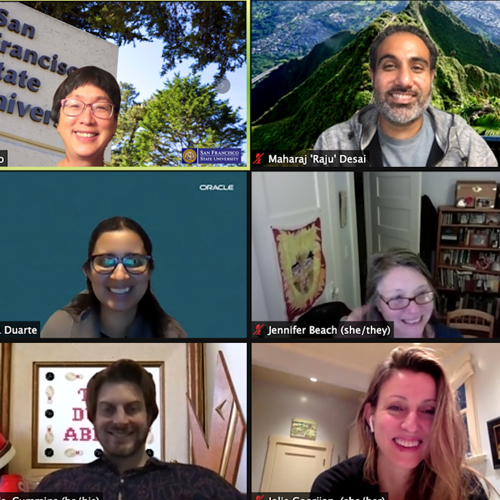
First-Year Experience Program
By Grace J. Yoo
Professor, Asian American Studies, Faculty Director, First-Year Experience Program
Teaching First-Year Students
For our first-year students, this year was the first year of college in which most of them never came to campus. The first year of college is always hard — typically, at SF State, 20% of our first-year students drop out.
With this year posing so many additional challenges for first-year students, our First-Year Experience instructors worked hard to make this first year be about getting to know SF State (from a distance) and about getting to know each other and themselves better. To those ends, we engaged in the following two teaching squares and the ongoing ASPIRE Faculty Learning Community:
Teaching Square: Teaching First-Year Students with a FYE Peer Mentor Online
This Spring 2021, the teaching square teaching with peer mentor online community has been meeting monthly to discuss how we are creating community with a FYE peer mentor. Monthly discussions included the innovative community practices that we have been doing and considering how we can bring “our” purpose to the class and to our faculty/peer mentor relationship? We have also discussed and shared innovative assignments as we have worked remotely. Despite being online, the peer mentors have provided engaged dynamism.
- Peer mentors created engaging padlets, jamboards and pair-share questions to elicit engagement. Peer mentors also worked with faculty on discussions about sensitive topics and worked with students on their writing skills throughout the semester.
- Faculty have noted a difference in their courses; we’ve had more engagement/participation this semester in classes with our peer mentors vs. classes without peer mentors.
- Peer mentors played a crucial role by connecting with struggling students by following up with those who have missed synchronous classes or assignments.
- In May, faculty and peer mentors shared closing rituals. Closing rituals developed and shared by professors Johana Duarte and Carolina Martinez Overton with their peer mentors Lorenzo Abecia and Sarah Dang were innovative and they included
Oscars-style awards for students:
- “Best Picture” (Zoom background)
- “Best Cinematography” (person who has the camera on the most)
- “Best Original Score” (best contributions to chat)
- “Best Breakout (Room) Performance” (best contribution to BR discussions
Teaching Square: Teaching First-Year Students Online with the SF State Student Strike Collection
- The Teaching Square, “Teaching first-year students online with the SF State Student Strike Collection,” met in Winter 2021 to prepare to incorporate the 1968 SF State student strike into our teaching. This teaching square focused on educating each other on the background of the Student Strike, reviewing the SF State Student Strike Collection and working together to create and share lesson plans on the various ideas of how to incorporate the SF State student strike into the curriculum. Several first-year instructors have been reading the text, Changing Academia Forever, Showing Agents of Change (and other films), and several articles about the strike. Students have worked on various assignments focused on the strike, including students in Professor Dan Curtis-Cumins’ course, who submitted their video projects to the LCA Showcase. Student videos can be viewed here.
- To build pride in our SF State social justice history, the First-Year Experience Program has also started a biannual lecture series with SF State student strikers who are coming in to share. On May 3, 2021, several FYE courses participated in a lecture by 1968 SF State student strikers who came and shared the following: 1)Why did you personally participate in the strike of 1968? 2) What were the lessons learned from your participation in the strike that informed your life? 3) What message of HOPE or perspective do you offer to students involved in racial justice movements today? Student strikers included Carmen Carrillo, Kitty Epstein, Jimmy Garrett, and Danny Glover.


Paul K. Longmore Institute on Disability
By Catherine Kudlick
Professor, History; Director, Paul K. Longmore Institute on Disability
Access Wisdom: The Longmore Institute
At the Paul K. Longmore Institute on Disability, we promote access as a priority and an opportunity. This is because it benefits far more people than we think or will ever know. There's a lot of shame around disability and/or aging, which too often makes people who would benefit most tough it out rather than thinking of it as a matter of social justice.
Access wisdom is built on a lot of great work among people with disabilities that stretches thinking and conversations. There's even a hashtag on social media #accessIsLove.
General Tips:
- Access doesn’t have to be expensive or complicated. Often, it’s just shifting perspective or being flexible.
- When inviting participants, consider what they might need to be there. You already do this when you provide an address and worry about having enough places to sit. Online, needs might be descriptions of visuals or for each person to say their name before they speak or figuring out if using the chat feature is distracting. Including a simple statement in your invite such as: "let me know if there's anything else you need in order to join us" or "If you have a disability or any condition where an accommodation would help, let me know so I can ensure we can each contribute" will a) show you're thinking about this, which almost never happens so it's GREAT, and b) will give you time to make sure everything's in place at the start rather than scrambling in front of everyone.
- Often less is more. Rather than try to pack in content, chairs, experiences, build in extra time and space to give everyone more breathing room. Being less packed in will free you up to talk more slowly and more deliberately, giving others a chance to digest. In our overstuffed lives, being liberated from excess can make the main points of an experience stand out.
- View access as a shared responsibility with unintended benefits for everyone. You're not in this on your own. The Longmore Institute can help with strategy and dealing with thorny issues, AT can help with software and best practices, people in your meeting can participate as note-takers, captioners, and monitoring chats. Not only that, but the person needing access can become a new kind of expert for everyone to learn from. Once access is understood as something shared, the pressure comes off, and everyone feels more invested, more creative, more present.
- Access is a work in progress, so it may not always be perfect or smooth—that's ok. Simply trying is already huge, plus it can spark creative thinking, be it about organizing spaces or conveying ideas.
Practical tips for making Zoom meetings more inclusive:
- If you're hosting, before you get to your meeting, make sure you have captions turned on. This will not only help those who can't hear or for whom English isn't their native language follow more closely. (Think elderly relatives and multilingual speakers.) When you're done, you'll also have a transcript! (Caution: Zoom's transcribing can be hilarious, so it's always good to spell out important names and concepts anyway.
- Describe what's on your screen, which helps those who can't see it and also helps the describers. Rather than say something like, "as you can see," ask a participant to describe a slide or image. That way you'll get a sense of their take-always, which you can adjust for as you move forward in a presentation. Consider an exercise where you have one set of participants describe a screen to another set of participants and then reverse. Yes, it takes longer than simply saying: "you're looking at x," but the impact will stick when they have to explain it.
- Have participants begin with a brief audio description of themselves, and consider introducing an extra twist that turns it into an informative version of the tired ice-breaker by asking them to relate one element of their appearance or what's in the background to why everyone is together; encourage them to be creative!
- Learn the Zoom shortcut keys for the things you do most. This accessibility feature will save you time hunting around your screen, especially if you switch between a laptop and a tablet where buttons are in different places but key commands stay the same.

Academic Senate
News & Updates
By Teddy Albiniak, Senate Chair, Academic Senate; Director of Forensics, Lecturer Faculty, Communication Studies
The Academic Senate wishes to thank the campus community for your engagement and resilience during this most challenging year. Congratulations to the winners of the 2021 elections to the Academic Senate and to Senate Subcommittees. We are pleased to report the following activity during the last two business plenaries on April 20 and May 4.
We wish you a smooth end to the semester and a revitalizing summer ahead!
Teddy Albiniak
Chair of the Academic Senate, 2020-21
APRIL 20 Plenary Review
Watch the zoom recording for April 20, 2021, plenary addressing the approved agenda.
The following items passed in the second reading
- Resolution to Condemn Anti-Asian Racism and Violence, written and co-sponsored by Senators Daus-Magbual, Le, and Woo with Professors Yoo, Tintiangco-Cubales, Francisco, and Dariotis; as amended
- Resolution to Acknowledge Receipt of the Faculty Work Assignment Equity Task Force Report as amended
- Degree Title Change for the MA in Communicative Disorder
- Revision to the BA in Theatre Arts
- New University Pathway Program as amended
- Elevation of the MS in Structural/Earthquake to an MS in Civil Engineering
- Proposed New Policy S21-XXX: Graduate Requirement Policy
- Revision to F16-248: Course Repeat Policy
- Proposed revision to S87-148: Academic Renewal Policy
- Proposed Resolution Recognizing Employee Service in Pandemic-Year Performance Evaluations
MAY 4 Plenary Review
Review the Zoom recording of the Academic Senate Plenary Tuesday, May 4, 2021 You can examine the items by agenda order on our Box folder or by activity:
PASSED AS AMENDED:
- S21-XXX: Curriculum and Course Standards Policy
- Revision to Academic Senate Policy #S99-183 Professional Development Council Charge and Composition
- Resolution on Receipt of the Academic Master Plan Framework
PASSED:
- Changes to S20-290: Policy on Restructuring Academic Units
- Revisions to S20-242: Academic Calendar Policy
- New Certificate in Data Science and Machine Learning for Biotechnology
- New Certificate in Liberal and Creative Arts (AMENDED)
- New Bachelor of Arts in Liberal Studies Integrated Teacher Education Program
- Title Change of the Bachelor of Science in Biology: Concentration in Zoology
- Title Change of the Bachelor of Science in Biology: Concentration in Biology and Limnology
- Elevation of the Master of Science in Engineering: Concentration in Energy Systems
- Elevation of the Master of Science in Engineering: Concentration in Embedded Electrical and Computer Systems
- Elevation of the Master of Science in Physics: Concentration in Astronomy
- Title Change of the Certificate in Pre-Master of Business Administration (MBA) Foundations
- Revision of the Bachelor of Science in Biology: Concentration in Cell and Molecular Biology
- Revision of the Bachelor of Science in Biology: Concentration in Microbiology
- Revision of the Bachelor of Science in Biology: Concentration in Physiology
- Revision of the Bachelor of Arts in Spanish
- Proposal for the Suspension of the Master of Fine Arts in Theatre Arts: Concentration in Design/Technical Production
- Proposal for the Suspension of the Master of Arts in French
- Resolution on the Impact of Technostress
- Policy Resolution #F20-287, Temporary Modification of Academic Senate Policy #S20-241, Policy Resolution on Retention, Tenure, and Promotion
- Revised Charge to University Research, Scholarship and Creative Activities Council (formerly University Research Council)
- Resolution on Transparency in Allocation of Indirect Cost
- Resolution on Dropping Classes for Non-Payment of Tuition and Fees

Closing the Circle
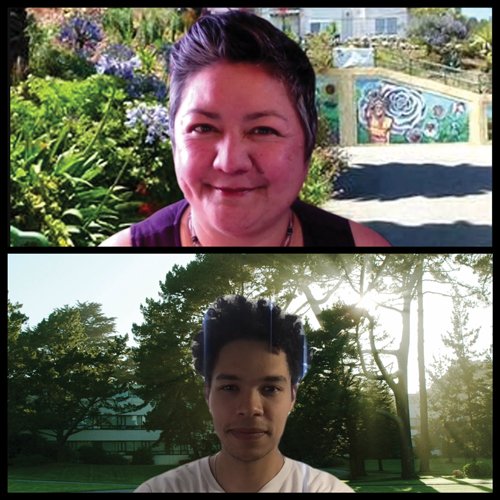
Ceremonies of Ending & Closing Messages
By Wei Ming Dariotis, granddaughter of Dédée Agostini Dariotis and Brian Neumann, CEETL Communications and Outreach Specialist
At the end of the semester, many faculty “close the circles” of the semester’s learning communities with rituals such as showcases of students work, potlucks (even virtual), the “Oscars” ceremony being practiced by Grace Yoo, recognition of the impact students have on one another’s learning and other creative ways to recognize that the time together is coming to an end. These activities engage the class with one last opportunity to make meaning of the work you have done together to ensure that the lessons learned will continue to support students in their journeys of life-long learning. Having an emotional component to these ceremonies helps students remember and see the work they have done as valuable, and see themselves as valued.
It can also be useful to send a final message to students, similar to the Welcome Messages, which are becoming increasingly popular as a way to create a sense of inclusion and belonging. Consider what you most want this group of students to take from this particular iteration of this course. How can you reiterate the larger purpose of the course and connect it to what you have learned about your students and their larger purposes? How can you invite them to stay connected with you, with each other and with the ideas and actions they have started in the course? How do you want to send them off on the next stage in their journeys?
Note, rather than calling it a “Good-Bye” (fun fact, “good-bye” is a contraction of God Be With You), consider calling it a “Closing Message.” My step-grandmother, who is Corsican, always reminds me, “never ‘adieu,’ always ‘au revoir’.”